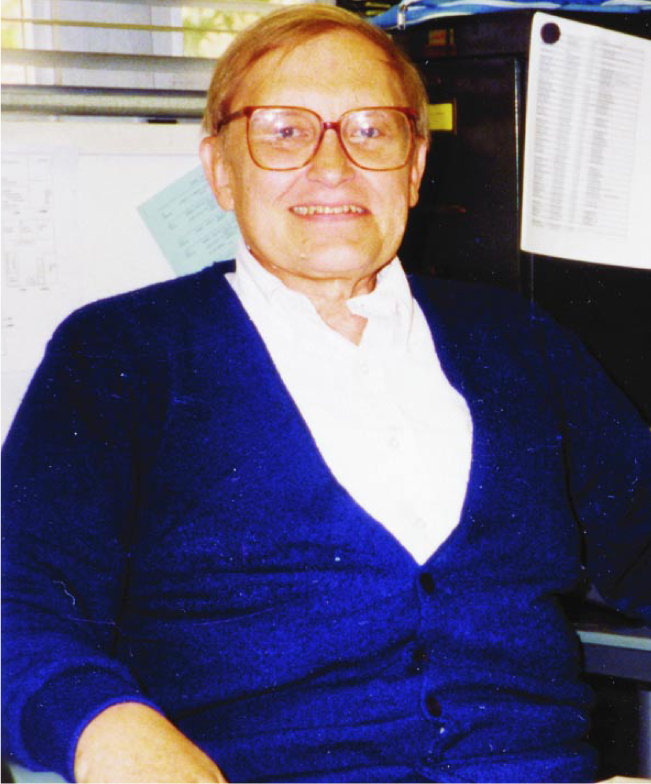John Myrick Dawson
DOI: 10.1063/1.1506761
John Myrick Dawson, who is considered the father of plasma-based accelerators and of computer simulation of plasmas, died in his sleep on 17 November 2001 in Santa Monica, California. He had been suffering from a kidney infection. John also was a professor of physics at UCLA.
John was born in Champaign, Illinois, on 30 September 1930. He received both his degrees in physics from the University of Maryland, College Park: a BS in 1952 and PhD in 1957. His thesis “Distortion of Atoms and Molecules in Dense Media” was prepared under the guidance of Zaka Slawsky.
On graduation, John joined the Princeton Plasma Physics Laboratory. Initially a research physicist, he rose to head the theoretical group from 1966 to 1973. He also spent two years (1969–71) at the Naval Research Laboratory in Washington, DC, where he started a plasma simulation group. He then joined UCLA in 1973 as a professor of physics and subsequently directed the institute for plasma and fusion research from 1989 to 1991.
John was a leading figure in the plasma physics community for more than four decades, with his contributions to science spanning all of plasma physics. He performed seminal work on magnetic fusion, inertial confinement fusion, space plasmas, plasma astrophysics, free-electron lasers, and basic plasma physics. He also proposed numerous controlled-fusion concepts. A visionary, he realized as early as the late 1950s the potential impact of simulations as a way to test both theories and large construction projects before they were built. He used simulations in 1959 to answer such fundamental questions as how large can a plasma wave become before breaking. During the late 1970s and 1980s, John was using simulations to test out new ideas such as plasma-based acceleration. By the 1990s, he was realizing his broader vision for simulations in such projects as the Numerical Tokamak (see Physics Today, March 1993, page 64
In the late 1970s and 1980s, while at UCLA, John pioneered the field of plasma-based acceleration. He proposed letting particles surf on the plasma-wave wakes left behind by a laser or a particle beam as it moved through plasma. The fields in these wakes can be more than 1000 times higher than in conventional accelerators. He took great satisfaction in recent experimental successes of plasma-based accelerators and their potential for being greatly miniaturized in the future.
John mentored several generations of plasma physicists and touched countless others with his generously shared insight, bounty of new ideas, and encouragement. Tudor Johnston, a colleague and collaborator of John’s from the Institut National de la Recherche Scientifique in Canada, remarked, “It was as if, among the cards lying face down on the table, he knew exactly which cards to choose to play the best hand. Many people with great talent cause discomfort to the less brilliant people around them. Not John, who had such a transparent and kindly nature that I’ve never met anyone who had a bad word to say of him.” A true humanitarian, John believed that science was still the most noble of professions. He believed strongly in the importance of controlled nuclear-fusion research and was particularly proud of his invention of an isotope separation process that was used to detect cancer and, consequently, help save many lives.
John received the James Clerk Maxwell Prize for Plasma Physics in 1977 and the Aneesur Rahman Prize for Computational Physics in 1994; both are the highest honors bestowed by the American Physical Society’s plasma physics and computational physics divisions, respectively. He was named California Scientist of the Year by the California Science Center in 1978.
John had successfully overcome life-threatening illnesses several times. Shortly before his death, he had been in improving health and had enjoyed attending APS’s division of plasma physics meeting in Long Beach, California. Many attendees may have seen him there, running around in an electric chair, which he said “everyone should have.” In conversation with him the night before his death, one of us (Katsouleas) found him to be upbeat about his recovery and tickled that one of his 20-year-old ideas (the surfatron) was in the news as an explanation for cosmic-ray acceleration from supernovae.
We remember John for his eternal optimism and his characteristic smile and chuckle. As two of his former students, we learned many lessons from him, and many of his favorite sayings still ring true and tell something about the man as well as his scientific philosophy. One is, “It is always easier to solve a problem if you know the answer before you start.” John used his powerful intuition and the tool he pioneered—computer simulation. He loved new ideas and experimental observations. Chan Joshi, a collaborator and fellow UCLA professor, recounts John’s favorite rejoinder to a perplexing observation: “I think we can simulate that!”
John was mentally sharp and active to the end, and he took great pleasure in discussing physics with colleagues, in the continued success of his former students and postdocs, and in the amazing progress being made in particle simulations of plasmas. John was loved by hundreds of colleagues, students, and friends, who created the John Dawson Memorial Fund through the UCLA Foundation. This fund aims to benefit students and young researchers in plasma physics anywhere in the US.

John Myrick Dawson

More about the Authors
Tom Katsouleas. 1 University of Southern California, Los Angeles, US .
Warren B. Mori. 2 University of California, Los Angeles, US .
